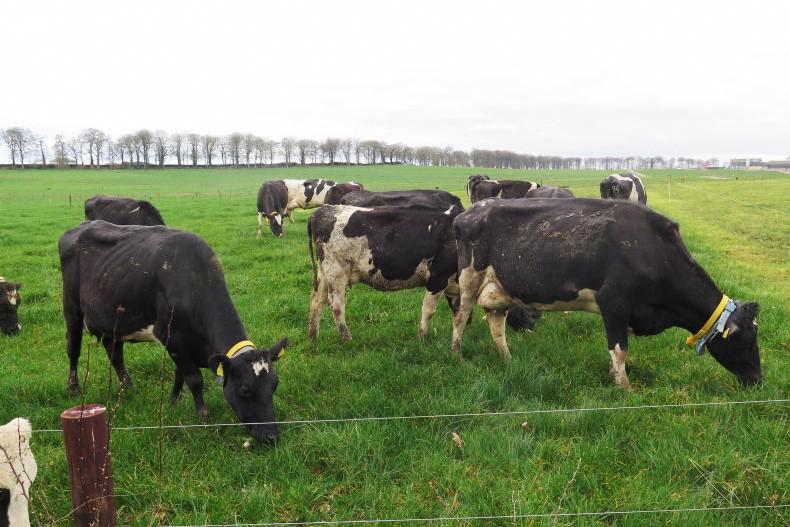The weather at the moment can best be described as typical February weather, with some wet days, some dry days and plenty of windy weather.
While there is some heavy rain forecast for the rest of the week, there should still be opportunities to get freshly calved cows out to grass, especially on dry farms.
One of the questions often asked by farmers is how to allocate grass to cows - that is, how does one know where to put up the fence?
There are a few ways of doing this. The following are two example approaches.
First approach
1. Work out how many cows are going for grazing and how much grass they are going to eat per grazing. For example, 15 cows eating 4kg of grass per grazing means the total amount of grass being allocated is 60kg of dry matter.2. Work out the area of the paddocks and the amount of grass in it. For example, a 0.75-hectare paddock, with a cover of 900kg/ha, means the total amount of feed in the paddock is 675kg.3. Divide the daily allocation by the total amount of feed in the field to work out how many grazings are in the paddock. In this example, there are 11 grazings in the paddock. Alternative approach
The following method is more suitable when cow numbers are changing regularly, or where grass covers differ across the field.
1. Work out how many cows are grazing and how much grass they are eating in the 12-hour break. For example, 15 cows eating 4kg is a total demand of 60kg.2. Work out how many square metres are needed to give 1kg of grass dry matter. To do this, divide the cover into 10,000. For example, a cover of 900kg into 10,000 is 11.1 metres squared per kilo of dry matter. The higher the cover of grass, the lower the number of metres to get 1kg of dry matter.3. Multiply this number by the demand to work out the total allocation. So, in this case, 11.1 metres, multiplied by 60kg, is 666 metres squared. This is how much area you need to give the cows.4. To work out where to put the fence, measure the width of the paddock and then divide this into 666. For example, if the paddock is 75m wide, the stripwire should be placed 8.9m back. Allocating the grass is only half the job. The amount of area being allocated daily needs to tweaked. As cow intakes change constantly, so too does the amount of grass in the paddock. Farmers should be looking at post-grazing heights and changing the allocation accordingly.
The weather at the moment can best be described as typical February weather, with some wet days, some dry days and plenty of windy weather.
While there is some heavy rain forecast for the rest of the week, there should still be opportunities to get freshly calved cows out to grass, especially on dry farms.
One of the questions often asked by farmers is how to allocate grass to cows - that is, how does one know where to put up the fence?
There are a few ways of doing this. The following are two example approaches.
First approach
1. Work out how many cows are going for grazing and how much grass they are going to eat per grazing. For example, 15 cows eating 4kg of grass per grazing means the total amount of grass being allocated is 60kg of dry matter.2. Work out the area of the paddocks and the amount of grass in it. For example, a 0.75-hectare paddock, with a cover of 900kg/ha, means the total amount of feed in the paddock is 675kg.3. Divide the daily allocation by the total amount of feed in the field to work out how many grazings are in the paddock. In this example, there are 11 grazings in the paddock. Alternative approach
The following method is more suitable when cow numbers are changing regularly, or where grass covers differ across the field.
1. Work out how many cows are grazing and how much grass they are eating in the 12-hour break. For example, 15 cows eating 4kg is a total demand of 60kg.2. Work out how many square metres are needed to give 1kg of grass dry matter. To do this, divide the cover into 10,000. For example, a cover of 900kg into 10,000 is 11.1 metres squared per kilo of dry matter. The higher the cover of grass, the lower the number of metres to get 1kg of dry matter.3. Multiply this number by the demand to work out the total allocation. So, in this case, 11.1 metres, multiplied by 60kg, is 666 metres squared. This is how much area you need to give the cows.4. To work out where to put the fence, measure the width of the paddock and then divide this into 666. For example, if the paddock is 75m wide, the stripwire should be placed 8.9m back. Allocating the grass is only half the job. The amount of area being allocated daily needs to tweaked. As cow intakes change constantly, so too does the amount of grass in the paddock. Farmers should be looking at post-grazing heights and changing the allocation accordingly.






 This is a subscriber-only article
This is a subscriber-only article










SHARING OPTIONS: